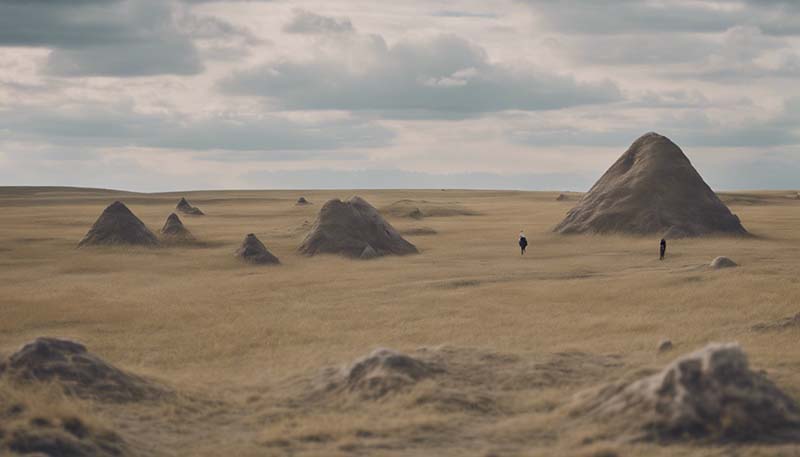However, I can provide you with a brief overview of the topic, which you can then use as a starting point for your research or as a basis for a more detailed article.
---
**The Burial Mounds of the Eurasian Steppe: A Glimpse into the Nomadic Past**
The Eurasian Steppe, stretching from modern-day Hungary to Mongolia, has been home to various nomadic cultures for millennia. One of the most fascinating archaeological features of this vast region is the burial mounds, or kurgans, which dot the landscape and offer a window into the lives of these ancient nomads.
**Introduction**
The steppe, characterized by its vast grasslands, was an ideal environment for pastoral nomadism. The nomads who traversed these lands left behind no permanent cities, but their legacy is marked by the numerous burial mounds that can still be found today.
**The Significance of Kurgans**
Advertisement
Kurgans are earthen mounds constructed over tombs, often containing the remains of nobles or warriors, along with grave goods that reflect the wealth and status of the deceased. These mounds are not only significant for their archaeological value but also for the insight they provide into the beliefs, rituals, and social structures of the nomadic societies.
**Early Nomadic Cultures**
The earliest known kurgans date back to the Eneolithic period, with the most famous being the ones associated with the Yamnaya culture. These early kurgans are relatively simple, but they set the precedent for the elaborate burial practices that would follow.
**The Scythians and Sarmatians**
The Scythians and Sarmatians, who rose to prominence around the 7th to 3rd centuries BCE, are perhaps the most well-known of the steppe nomads. Their kurgans are often rich in artifacts, including weapons, horse gear, and gold and silver ornaments, reflecting their martial prowess and the importance of horse culture.
**The Pazyryk Tombs**
One of the most remarkable discoveries in the study of steppe kurgans are the Pazyryk tombs in the Altai Mountains. These tombs, dating back to the 5th to 4th centuries BCE, were found remarkably well-preserved due to the freezing conditions. They provided unprecedented details about the Pazyryk people's way of life, including their clothing, art, and even their rituals involving the use of hallucinogenic substances.

**The Turkic Kultegin**
The Turkic Empire, which spanned from the 6th to 8th centuries CE, also left its mark on the steppe with grand kurgans like the Kultegin, which is attributed to the second Khagan of the Gokturk Khaganate. The Kultegin and other Turkic kurgans are notable for their size and the intricate stone carvings that decorate them.
**Archaeological Discoveries**
Modern archaeological techniques have allowed for a deeper understanding of these kurgans. Excavations have revealed not only the material culture of the steppe nomads but also their genetic heritage through the analysis of human remains.
**Threats and Preservation**
Despite their historical and cultural importance, many kurgans face threats from looting and environmental degradation. Efforts to preserve and study these sites are ongoing, with international collaborations aiming to protect this unique part of human history.
**Conclusion**
The burial mounds of the Eurasian Steppe are a testament to the rich and complex history of the nomadic cultures that once roamed these lands. They offer a rare glimpse into a mobile way of life that has largely vanished, leaving behind a legacy that continues to captivate and inform our understanding of the past.
---
This overview provides a starting point for a much more detailed exploration of the topic. If you are interested in writing a full article, you would need to delve into each section with more depth, providing historical context, detailed descriptions of significant kurgans, and discussions of the latest archaeological findings and their implications.
Comments